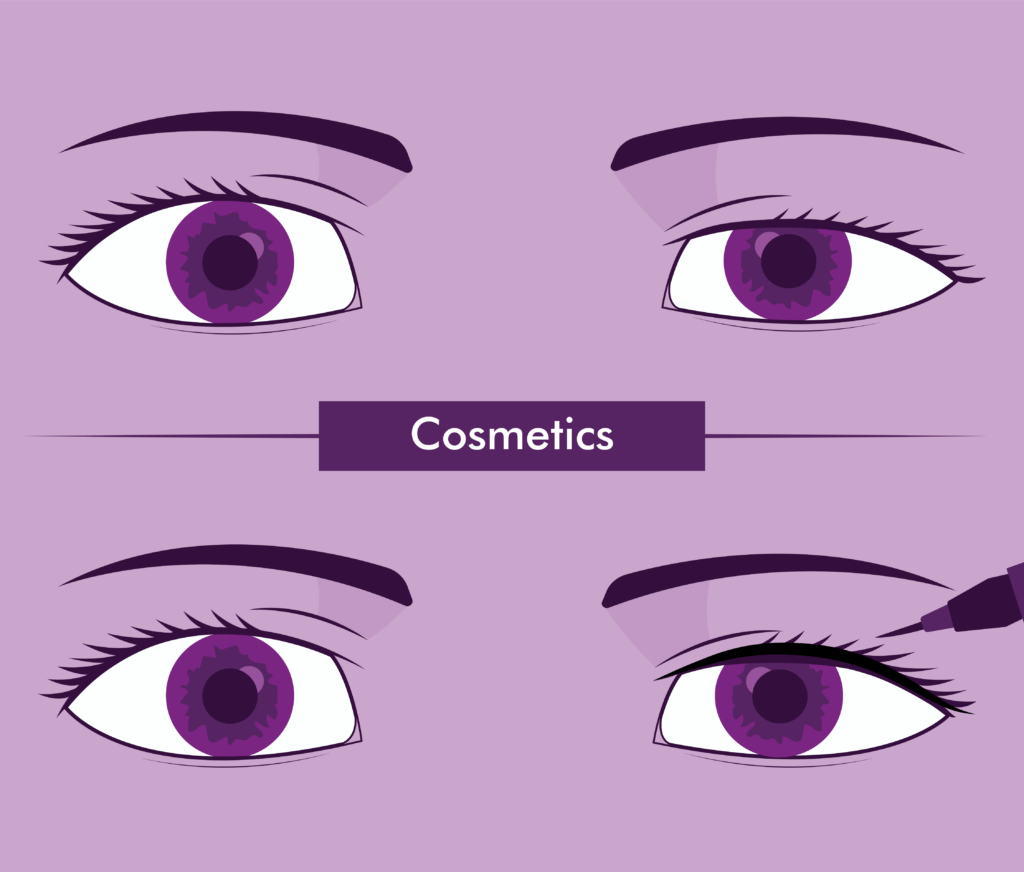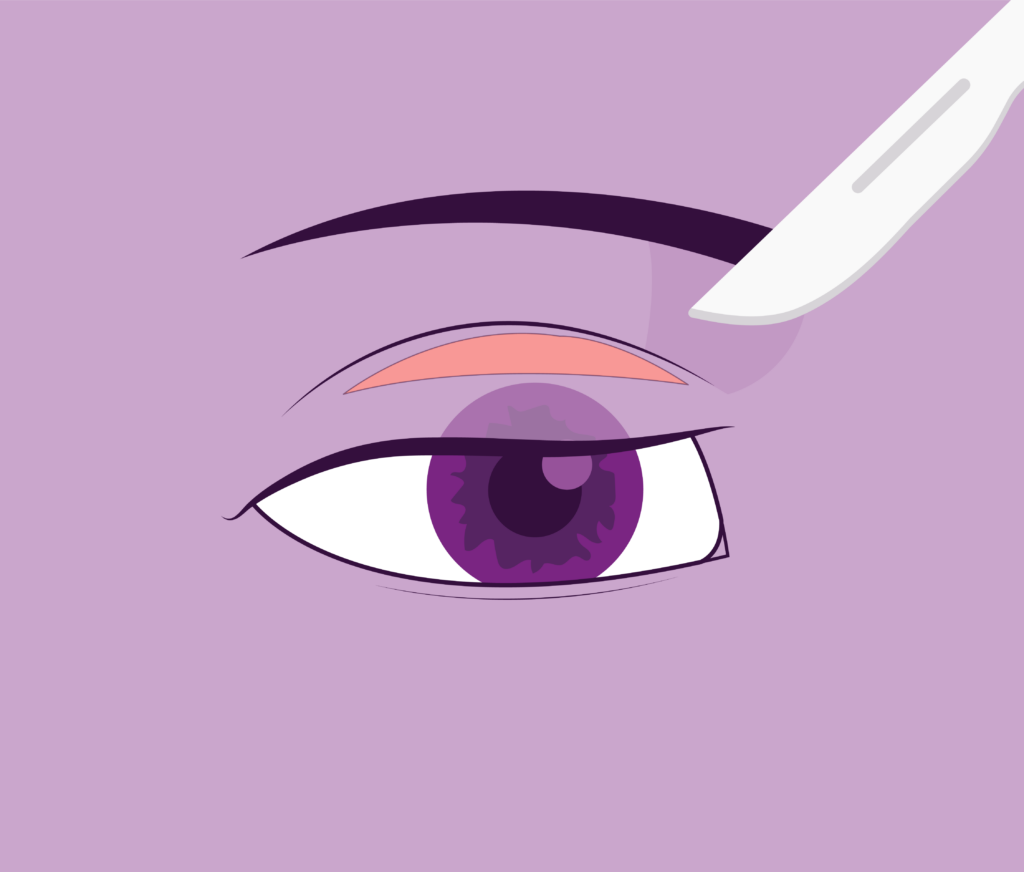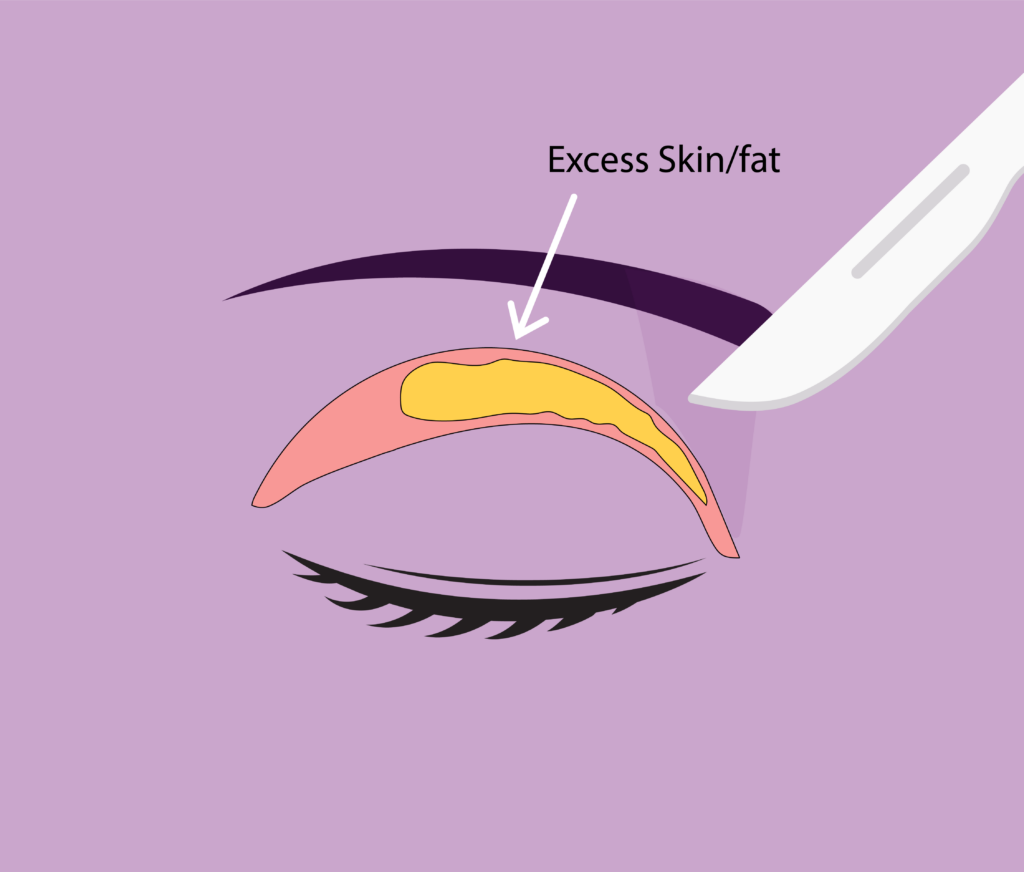Asymmetrical eyes: Here are five ways that work to fix asymmetrical eyes, uneven eyes, and droopy eyelids.
If you’re bothered by eye asymmetry, you should know that there is more than one way to change how your eyes appear. Check out these surgical and non-surgical options to fix asymmetrical eyes.
You might wonder, is there any way I can make my uneven eyes or uneven eyelids
look even? Here’s a look at non-invasive methods to help deal with facial asymmetry due to uneven eyes.
Non-invasive
Makeup
Make-up is always an excellent and affordable way to make subtle, non-permanent changes to your face and mask uneven eyes. Women have been using makeup for many years to try and achieve a look that boosts their confidence. Creating the illusion of a symmetrical face to help fix uneven eyes is easy with YouTube, Pinterest, and even TikTok tutorials.


Botox
There is a tendency for the eyebrows to be asymmetrical, which can make some people appear to have uneven eyes. Brows are commonly asymmetrical. An option for a non-invasive brow lift is available with Botox. Botox injections may provide short-term relief. Botox typically lasts three to four months, but it can last up to six months in some cases. It can also be referred to as a “mini browlift,” and it is sometimes preferred over cosmetic surgery. In the case of asymmetrical eyes, Botox can correct small asymmetries in facial features caused by the muscles, but if the position is due to an excess of skin on one side, you may need a surgical brow lift.


Most people would like to alter their asymmetrical eyes, whether they are genetic or acquired through natural aging. The American Society for Aesthetic Plastic Surgery saw an increase in the use of injectables. With injectables like botox, a youthful appearance can be achieved through non-surgical procedures that are effective and non-invasive.
Find out how surgeons perform operations on asymmetrical eyes.
In addition to gravity pulling continuously on the eyelids, the extra skin accumulates because of elasticity problems, which can cause uneven eyes. Some people have a condition called upper eyelid ptosis, which makes their appearance and self-esteem suffer. The three most common types of eyelift surgery are browlifts, blepharoplasty, and canthoplasty.
Blepharoplasty
The goal of blepharoplasty is to remove soft tissues like excess skin, muscle, and possibly fat from the lower or upper eyelid in order to make the eyes appear younger. It does not alter the shape or size of the eye.


Brow lift
After celebrities like Kendall Jenner, Arianna Grande, and Bella Hadid were reported to have had browlifts, browlifts have been on the rise. During a brow lift, the eyebrows are elevated to correct sagging skin, which can sometimes create a fox-eye effect. This procedure gives the face a youthful appearance and decreases facial asymmetry. A brow lift does not have a permanent effect on facial features. After the cosmetic procedure, it is possible for the skin to droop again as a result of aging and sun damage.
A brow lift to improve the appearance of asymmetrical eyes or uneven eyebrows can be performed using various surgical methods, including:
- Coronal brow lift
- Endoscopic brow lift
- Hairline brow lift
- Gliding Browlift
The risks involved with brow lifts for hairlines are similar to those associated with any surgical procedure, including scarring, bleeding, and infections.


Canthoplasty to fix droopy eyelid problems
Droopy eyelids or sagging eyes are corrected by canthoplasty, a reconstructive surgical procedure that tightens the muscles and ligaments that support the outer corners of the eye. This procedure to fix a droopy eyelid involves cutting and repositioning a portion of the lower canthal tendon.
As part of our mission at VIDA Wellness and Beauty, we strive to make patients feel comfortable during their treatments to correct asymmetrical eyes. Choosing the right cosmetic surgeon is crucial when it comes to correcting the structure around your uneven eyes or the appearance of your eyelids. We can help you with your eye asymmetry concerns via a virtual consultation with Dr. Quiroz in our Tijuana office.
Please note that this article does not provide medical advice. It is intended to provide general information only. It should not be used in place of professional medical advice, diagnosis, or treatment. If you are seeking a diagnosis or treatment, please consult your primary physician or a specialist. A health emergency should be reported immediately to your doctor or 911 if you suspect you may be experiencing one.